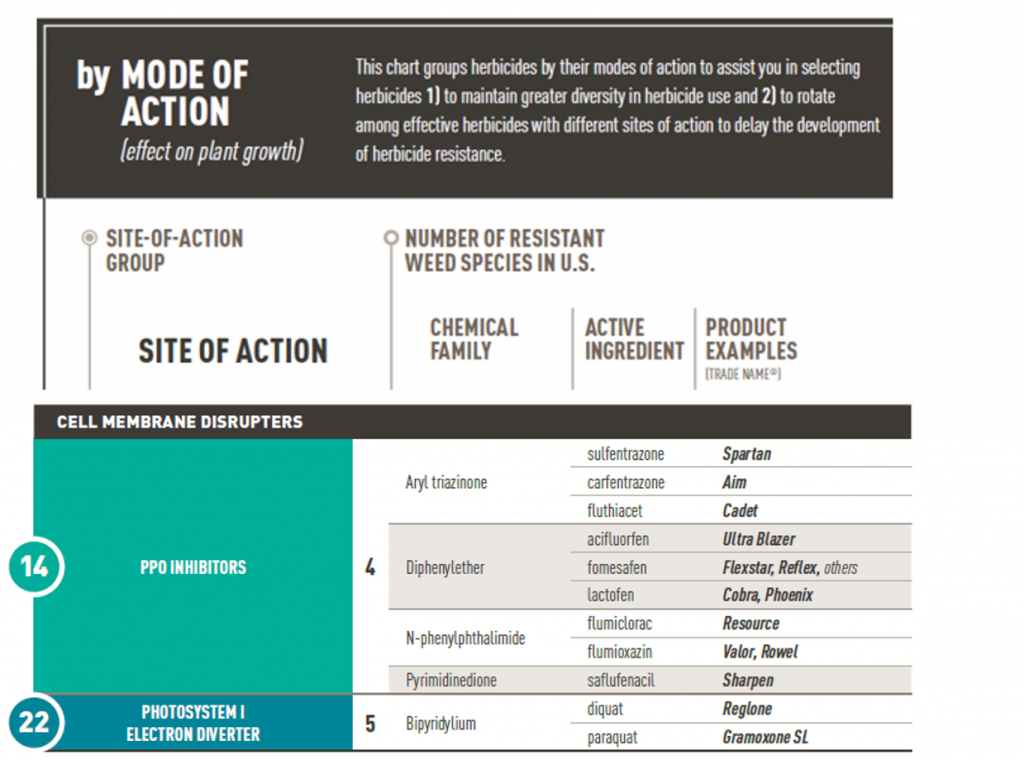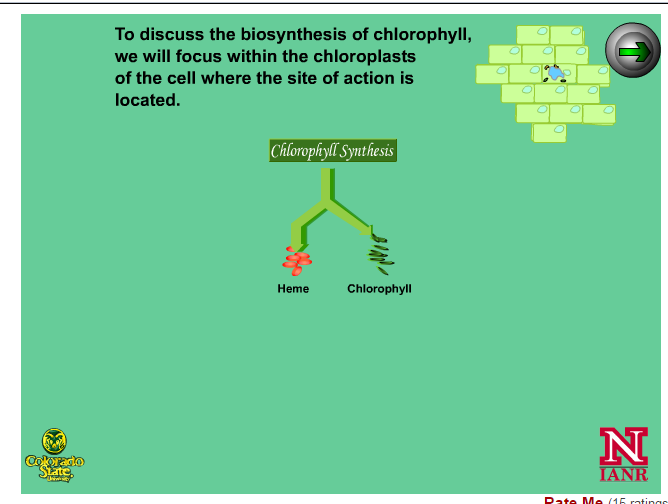Chapter 18: MOA Part 4 – Photosynthesis Inhibitors (PPO & Pigment Inhibitors)
18.4 Herbicides that Interfere with PPO (A Cell Membrane Disrupter SOA)

Let’s now explore how the Group 14, PPO Inhibitors, interfere with PPO and the effect that has on cell membranes. Not only do they cause a decrease in chlorophyll and heme production, but the concentration of protoporphyrin increases and begins to accumulate throughout the cell. As with most of the herbicides, if the plant is maintained in the dark or in dim light, the effects of the herbicide are not observed. However, when exposed to light the protoporphyrin released in the cell is excited to the triplet state with a high efficiency and interacts with molecular O2 to produce singlet oxygen. Singlet oxygen is toxic to cells, causing double bonds of fatty acids and amino acids to breakdown. In this way, the herbicides use the energy from the sun to directly destroy plant tissue.
The following animation gives a visual illustration of the biochemical pathway that leads to chlorophyll and heme production, as well as the effects of the PPO Inhibitors and toxic singlet oxygen that is formed.

Membranes, sites with high concentrations of unsaturated fatty acids, are particularly vulnerable to this type of damage. The plasma membrane of the plant cell is considered to be most impacted by the photodynamic damage from herbicides that inhibit PPO.
PPO Inhibitors – Group 14 (HRAC – E)
As a quick summary, then, there are three key ways that PPO Inhibitors cause plant damage:
- Stop formation of chlorophyll
- Causes protoporphyrinogen IX to accumulate in cytoplasm where it reacts with light and forms singlet oxygen
- This destroys lipids and cell membranes
Review and Reflection